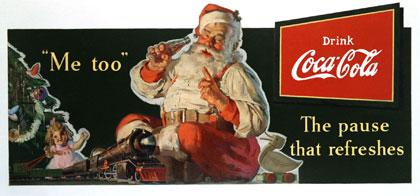
The jolly, white-bearded man in a red suit, known and loved worldwide as Santa Claus, didn’t just magically appear one Christmas Eve. The story of Who Came Up With Santa Claus is a fascinating blend of history, legend, and cultural influences, spanning centuries and continents. From a generous bishop to a mischievous elf, Santa’s journey is one of transformation and enduring charm.
Table Content:
The roots of Santa Claus can be traced back to Saint Nicholas, a 4th-century Greek bishop of Myra, in modern-day Turkey. Known for his piety and generosity, particularly towards children, stories of his kindness spread throughout Europe. One famous tale recounts how he saved three young girls from poverty by secretly delivering bags of gold down their chimney. This act of charity solidified his image as a protector of children and a gift-giver. Over time, Saint Nicholas became a popular saint in the Netherlands, where he was known as Sinterklaas. Dutch settlers brought the tradition of Sinterklaas with them to New Amsterdam (present-day New York) in the 17th century, where his legend continued to evolve.
The transformation of Sinterklaas into the modern-day Santa Claus was a gradual process, influenced by American culture and literature. Washington Irving, in his 1809 satirical history of New York, “Knickerbocker’s History of New York,” portrayed Saint Nicholas as a jovial, pipe-smoking Dutchman, riding a flying wagon and delivering presents. This playful depiction helped to shape the emerging American image of Santa.
Then, in 1823, Clement Clarke Moore’s poem, “A Visit from St. Nicholas” (more commonly known as “Twas the Night Before Christmas”), cemented many of the iconic features we associate with Santa today: a sleigh pulled by eight reindeer, a descent down the chimney, and a sack filled with toys. Moore’s poem gave Santa a distinct personality, describing him as a “right jolly old elf” with a “broad face and a little round belly, that shook when he laughed like a bowl full of jelly.”
 The Evolution of Santa Claus Through History
The Evolution of Santa Claus Through History
Throughout the 19th and 20th centuries, Santa’s image continued to be refined. Illustrators like Thomas Nast, known for his political cartoons, played a significant role in visualizing Santa. Nast’s illustrations in Harper’s Weekly established the now-familiar image of Santa: a plump, cheerful man with a white beard, dressed in a red suit with white fur trim.
The commercialization of Christmas further solidified Santa’s image as a cultural icon. Coca-Cola, in its 1930s advertising campaigns, adopted Nast’s depiction of Santa and cemented the red-and-white color scheme in the public consciousness. While Coca-Cola didn’t create the red suit, they certainly helped to popularize it.
 Santa Claus in a Coca-Cola Advertisement
Santa Claus in a Coca-Cola Advertisement
Dr. Emily Carter, a cultural historian specializing in holiday traditions, notes, “Santa Claus is a fascinating example of how cultural narratives evolve over time. He embodies the spirit of generosity and the magic of childhood, drawing from both religious and secular traditions.”
The story of who came up with Santa Claus is not a simple one. It’s a tapestry woven from threads of history, folklore, and commercial influence. He’s a symbol that transcends cultural boundaries, bringing joy and wonder to children and adults alike. His enduring appeal lies in his embodiment of the best aspects of the human spirit: generosity, kindness, and the magic of believing.
 Modern Santa Claus Delivering Presents on Christmas Eve
Modern Santa Claus Delivering Presents on Christmas Eve
Professor James Miller, an expert in folklore and mythology, adds, “Santa Claus is more than just a figure who delivers presents; he represents the hope and wonder associated with the holiday season. He is a figure of pure joy, a reminder of the importance of giving and the magic of childhood.”
In conclusion, while Saint Nicholas is the historical foundation, the Santa Claus we know and love today is a product of centuries of cultural evolution. Who came up with Santa Claus is less about a single creator and more about a collective process of storytelling and reimagining, resulting in a timeless symbol of holiday cheer.
FAQ
Is Santa Claus real? Santa Claus, as a magical figure who flies around the world delivering presents, is a beloved tradition. The spirit of Santa Claus—generosity, kindness, and the magic of believing—is very real.
Who is Saint Nicholas? Saint Nicholas was a 4th-century Greek bishop known for his generosity and kindness, especially towards children. He is considered the inspiration for the figure of Santa Claus.
Why does Santa wear a red suit? While there’s no definitive answer, popular belief credits Thomas Nast’s illustrations and Coca-Cola’s advertising campaigns for solidifying the red suit image.
How did Santa get his reindeer? Clement Clarke Moore’s poem, “A Visit from St. Nicholas,” introduced the eight reindeer that pull Santa’s sleigh. Rudolph, the ninth reindeer, was a later addition, created by Robert L. May for a Montgomery Ward department store booklet.
Where does Santa live? Santa Claus is traditionally believed to live at the North Pole, where he and his elves make toys for children around the world.
How does Santa deliver presents in one night? That’s the magic of Christmas! It’s part of the wonder and mystery surrounding Santa Claus that fuels children’s imaginations.
What are some other names for Santa Claus around the world? Santa Claus is known by many names around the world, including Father Christmas, Père Noël, Kris Kringle, and Weihnachtsmann.